| |
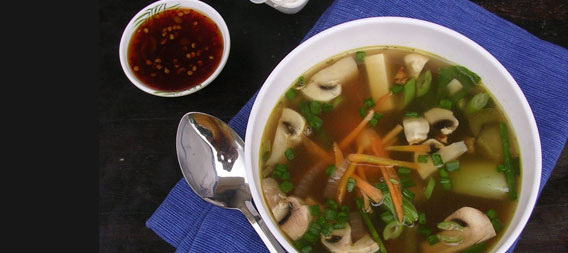
For most people unfamiliar with Chinese soup, the idea of a Chinese soup consists of the chicken broth used in wanton noodle soups and the thick gluey paste in which mysterious bits of meat float about in small touristy Chinese restaurants with too much pepper added to it.
The truth is that for most people, Chinese soup remains a mystery, and few, besides those who actually grow up in Chinese families have witnessed and tasted the wide variety of Chinese soups and understand the art behind the boiling of these Chinese soups and their amazing benefits to health.
Chinese soups can be divided into two main categories, quick boil soups that take no more than twenty minutes from preparation to consumption and the traditional and more well loved long hour soups that require hours of work and boiling before it is considered ready to be consumed and enjoyed.
Most recipes that one can find online for Chinese soups fall into the former category, it is the recipes in the latter category, the long hours double boiled soups, that remained shrouded in mystery, often making no it farther than a Chinese matron’s stove top.
To prepare Chinese long hour soups, one needs to look for ingredients beyond the average neighborhood grocery stores or supermarkets. Although many ingredients for Chinese long hour soups can be found in supermarkets and fresh markets, Chinese long hour soups also require many accompanying ingredients that add both flavor and health benefits, which are only available in specific Chinese herbal stores and Chinese markets.
A CONTEXTUAL DEFINATION OF HEALTH
 For the Chinese, the definition of health differs in different context. Long hour soups can be further divided into soups that supplement one's body, specifically soups that are made to strengthen a body with weak constitution, to recover from illnesses and to make up for lost nutrients or general weaknesses. This type of soup is general known as supplementary soups. This is often referred to as "bu", which means to supplement and also to strengthen. For the Chinese, the definition of health differs in different context. Long hour soups can be further divided into soups that supplement one's body, specifically soups that are made to strengthen a body with weak constitution, to recover from illnesses and to make up for lost nutrients or general weaknesses. This type of soup is general known as supplementary soups. This is often referred to as "bu", which means to supplement and also to strengthen.
Another type of long hour soups is that to balance the body, it is meant to complement the forces and processes already at work in the body. This type of soup is known as "zhong he", meaning to complement and to harmonize.
Typically, the first type of soup, the supplementary soups are given to people with weaker constitutions, such as women on their period, women who has just given birth to a child, people recovering from injury or illnesses, and people who are generally weak and who tends to fall ill easily.
The second type of soup, the complementary and harmonizing soups are meant for the general upkeep of health and can be enjoyed by almost anyone.
THE CHINESE VIEW OF COMPLIMENTARY HEALTH
Harmony and complementing elements are crucial concepts and common themes that run through many Chinese philosophies, including their philosophy for what constitutes as good health.
The Chinese view of health is one where elements complement one another. Food is generally divided into two large categories: Heaty and cooling.
Just as the concept of yin and yang dictates the wider Chinese understanding of the cosmos, it is also used in its application to the classification of food and diet. This Chinese concept of cooling or heaty food generally has to do with sensation or overall effect it has on the body on ingesting the food item.
The Chinese view of health takes into consideration the context of the body, the specific needs of the body in different situation, climates for those with different physical constitutions.
As a result, there is no one single type of food, or in the case of our discussion, soup, that is considered once and for all healthy. What is a healthy soup depends entirely on the person's physical state and many other factors.
SUPPLEMENTARY SOUP—CREATING HEAT
In general, Chinese supplementary soups are meant to create heat and to make up for lost nutrients in the body. Traditionally, supplementary soups cater to people with weak health or need to strengthen their bodies.
Supplementary soups are very commonly double boiled. Double-boiling is a method of preparing soup that requires two layers of containers, one enclosed within another, and the soup is boiled not using direct exposure to heat or fire, but is warmed and boiled by steaming it in a vat. The process is much like steaming, but it is usually done over a longer stretch of time, often several hours.
They also typically contain yang (heaty) elements. Ingredients for this kind of soup general includes:
 Korean ginsengs- Different from its North American counterpart, Korean ginsengs are known to be supplementary and has a yang energy. Its health benefits include: warding off stress and fatigue, boosting one's energy. It is also known to lower cholesterol and helps to treat diabetes. Korean ginsengs- Different from its North American counterpart, Korean ginsengs are known to be supplementary and has a yang energy. Its health benefits include: warding off stress and fatigue, boosting one's energy. It is also known to lower cholesterol and helps to treat diabetes.
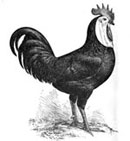 Black chicken- Sometimes also known as silkie chicken is a breed of chicken known for their unusually soft and fluffy plumage. This breed of chicken is not generally used in Western cuisines, but in Chinese cuisine, they are considered highly supplementary in their health benefits. Today, scientists have discovered that black chickens contain high levels of powerful anti-oxidants that are reportedly twice the amount found in ordinary breeds, and are classified as a new "super food". Black chicken- Sometimes also known as silkie chicken is a breed of chicken known for their unusually soft and fluffy plumage. This breed of chicken is not generally used in Western cuisines, but in Chinese cuisine, they are considered highly supplementary in their health benefits. Today, scientists have discovered that black chickens contain high levels of powerful anti-oxidants that are reportedly twice the amount found in ordinary breeds, and are classified as a new "super food".
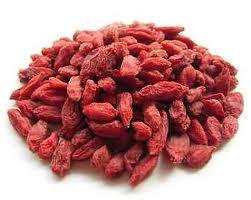 Gou Qi Zi (Chinese wolfberry)—they are tiny red date-like herbs that are known to nourish the liver and kidney. Also used to improve blood circulation and erectile dysfunction, they are also known to brighten eyes and to improve one's vision. Gou Qi Zi (Chinese wolfberry)—they are tiny red date-like herbs that are known to nourish the liver and kidney. Also used to improve blood circulation and erectile dysfunction, they are also known to brighten eyes and to improve one's vision.
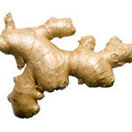 Ginger- A common remedy for cold in both Western and Eastern cultures, ginger are used to relieve symptoms of cold, aches, fatigue and nausea. It is also commonly believed to aid in the removal of wind in a person’s digestive tracts. It is also commonly used to alleviate menstrual cramps for women. Ginger- A common remedy for cold in both Western and Eastern cultures, ginger are used to relieve symptoms of cold, aches, fatigue and nausea. It is also commonly believed to aid in the removal of wind in a person’s digestive tracts. It is also commonly used to alleviate menstrual cramps for women.
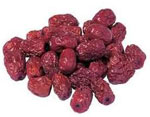 Red dates- Very commonly found in supplementary soups for women, red dates are known improve anemia in women. They also improve one's skins complexion and elasticity. Red dates also contain calcium, which help in the prevention of osteoporosis. Red dates- Very commonly found in supplementary soups for women, red dates are known improve anemia in women. They also improve one's skins complexion and elasticity. Red dates also contain calcium, which help in the prevention of osteoporosis.
|
COMPLEMENTARY SOUPS "NEUTRALIZING OR COOLING EFFECTS"
On the other end of the spectrum are complementary soups that are meant to upkeep one’s health through neutralizing and harmonic effects or used to cool an overly "yang" or heated body.
Ingredients commonly found in this kind of soups include:
Chrysanthemum- Commonly boiled with rock sugar or cane sugar to create herbal tea, chrysanthemums help to alleviate heat within the body. It has also been found that chrysanthemum contains high amount of B carotene. It is also believed to lower cholesterol, detoxify the liver and calm nerves.
American ginseng- Not to be confused with Korean ginseng, American ginseng is native to North America and is known to have a cooling effect on the body. Like the Asian ginseng, it also reduces stress and can increase mental alertness and treat fatigue.
Ficus (or Chinese fig)- Helps to strengthen the lungs, and is believed to help prevent colds and can reduce allergy symptoms such as asthma and nasal inflammation. It is generally added to soups to help clear the air passages and to alleviate coughs.
Luo Han Guo (also known as monk fruit)- Sweet in taste and known to treat colds and sore throats. It is very commonly made into sweet herbal tea, but can sometimes be used in soups. It also has strong anti-oxidant properties and is used to treat heat stroke traditionally.
North and South Almonds- A very common ingredient used in many kinds of Chinese long hour soups, they are considered neutral and harmonizing. A mixture made up of two different kinds of almonds, they can often be bought as a mixture in Chinese herbal stores. North almond is bitter in taste and is also known as bitter almond. Its health properties include alleviating cough and improving overall health of one’s intestine, it also reduces symptoms of asthma. It is well known to have some toxicity, and hence south almond is mixed in with north almonds to balance it out.
DISCOVERING WHAT WORKS FOR YOUR HEALTH
The above list is only an exhaustive list of all the various Chinese herbs used to create various Chinese soups. Ingredients for all kinds of Chinese long hour soups can also be found online. To truly appreciate all that Chinese soup can offer, however, one would need to understand more about the various health benefits of the various components that make up the soup and also the needs of individual bodies at different times throughout one's life. |
|
|
 |
OUR 2012 NEWSLETTERS
Chinese soup: The way to health & vitality
Hinamatsuri "Girl's day"
Ikebana: The Spiritual Art of Living Flowers
Mrs. Lin's Kitchen's Guide to Celebrating the Lunar New Year
NEWSLETTER ARCHIVES
2012
2011
2010
2009
2008
2007
2006
2005
2004
2003
2002
2001
|
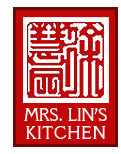

 For the Chinese, the definition of health differs in different context. Long hour soups can be further divided into soups that supplement one's body, specifically soups that are made to strengthen a body with weak constitution, to recover from illnesses and to make up for lost nutrients or general weaknesses. This type of soup is general known as supplementary soups. This is often referred to as "bu", which means to supplement and also to strengthen.
For the Chinese, the definition of health differs in different context. Long hour soups can be further divided into soups that supplement one's body, specifically soups that are made to strengthen a body with weak constitution, to recover from illnesses and to make up for lost nutrients or general weaknesses. This type of soup is general known as supplementary soups. This is often referred to as "bu", which means to supplement and also to strengthen. Korean ginsengs- Different from its North American counterpart, Korean ginsengs are known to be supplementary and has a yang energy. Its health benefits include: warding off stress and fatigue, boosting one's energy. It is also known to lower cholesterol and helps to treat diabetes.
Korean ginsengs- Different from its North American counterpart, Korean ginsengs are known to be supplementary and has a yang energy. Its health benefits include: warding off stress and fatigue, boosting one's energy. It is also known to lower cholesterol and helps to treat diabetes. Black chicken- Sometimes also known as silkie chicken is a breed of chicken known for their unusually soft and fluffy plumage. This breed of chicken is not generally used in Western cuisines, but in Chinese cuisine, they are considered highly supplementary in their health benefits. Today, scientists have discovered that black chickens contain high levels of powerful anti-oxidants that are reportedly twice the amount found in ordinary breeds, and are classified as a new "super food".
Black chicken- Sometimes also known as silkie chicken is a breed of chicken known for their unusually soft and fluffy plumage. This breed of chicken is not generally used in Western cuisines, but in Chinese cuisine, they are considered highly supplementary in their health benefits. Today, scientists have discovered that black chickens contain high levels of powerful anti-oxidants that are reportedly twice the amount found in ordinary breeds, and are classified as a new "super food". Gou Qi Zi (Chinese wolfberry)—they are tiny red date-like herbs that are known to nourish the liver and kidney. Also used to improve blood circulation and erectile dysfunction, they are also known to brighten eyes and to improve one's vision.
Gou Qi Zi (Chinese wolfberry)—they are tiny red date-like herbs that are known to nourish the liver and kidney. Also used to improve blood circulation and erectile dysfunction, they are also known to brighten eyes and to improve one's vision. Ginger- A common remedy for cold in both Western and Eastern cultures,
Ginger- A common remedy for cold in both Western and Eastern cultures,  Red dates- Very commonly found in supplementary soups for women, red dates are known improve anemia in women. They also improve one's skins complexion and elasticity. Red dates also contain calcium, which help in the prevention of osteoporosis.
Red dates- Very commonly found in supplementary soups for women, red dates are known improve anemia in women. They also improve one's skins complexion and elasticity. Red dates also contain calcium, which help in the prevention of osteoporosis.